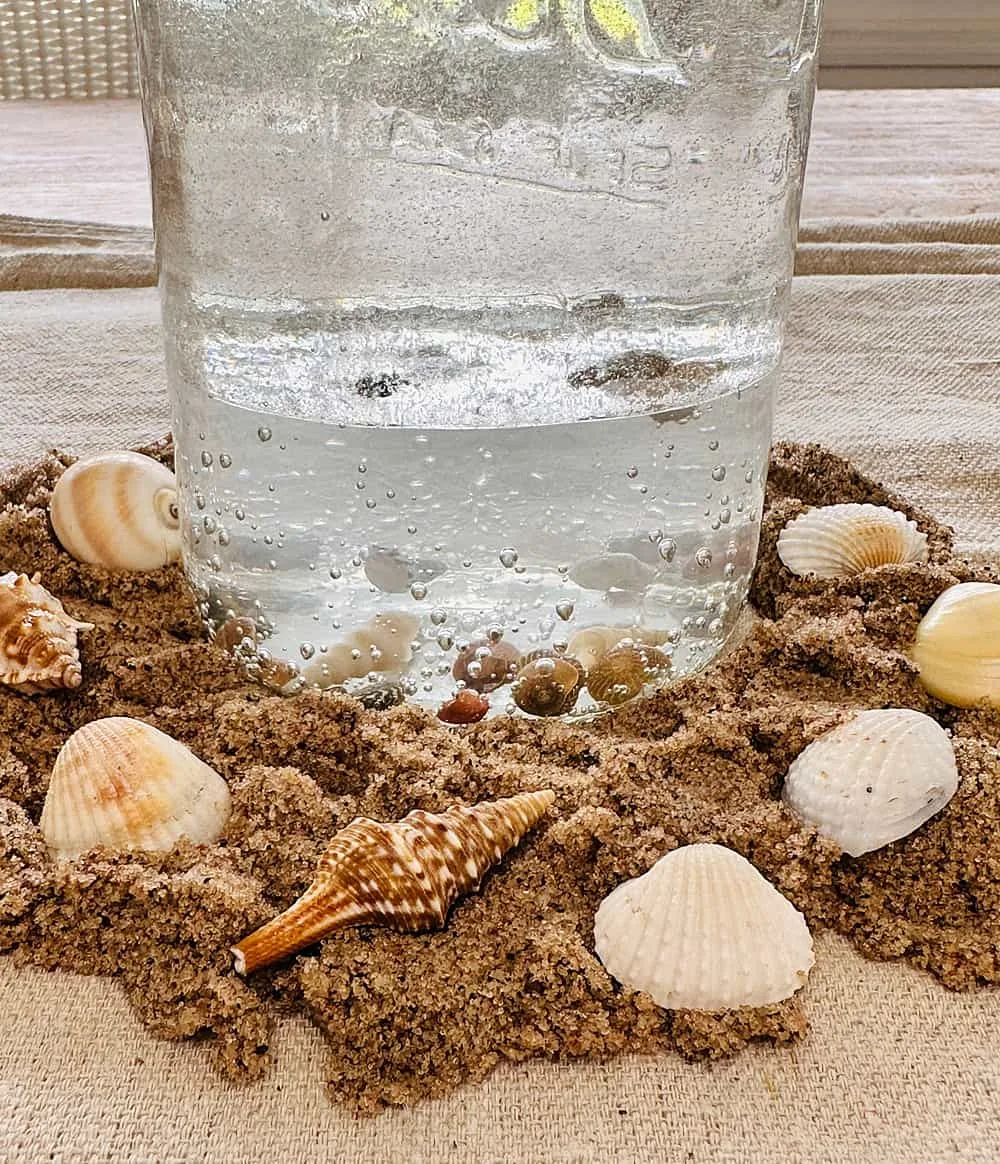
By using this site, you agree to our Terms of Use. This post may contain affiliate links. Read our disclosure policy.
Follow us on Instagram for more fun ideas for kids!
This Dancing Seashells experiment is a magical way to show kids a number of principles including density, buoyancy, and chemical reactions. All you need is water, oil, shells and Alka-Seltzer to create this mesmerizing experiment!
As the summer winds down and the kids start to tire of their usual activities, you might be looking for something new and engaging to keep their minds active and their curiosity piqued. Today, we are going to discuss a fascinating science experiment that’s not only fun but also educational. This Dancing Seashell experiment will mesmerize your children and is a simple science experiment to set up for little ones!
Remember the ‘dancing corn’ experiment where baking soda and vinegar were used to make the corn kernels bob and weave in a container? In the same vein, this experiment uses water, baby oil, and Alka-Seltzer tablets to make seashells float up and “dance” in a jar. This experiment is most similar to our DIY Lava Lamp experiment where we also use similar ingredients but with blobs of food coloring to make the water globules “dance” to look like molten lava. The main difference here is using seashells!
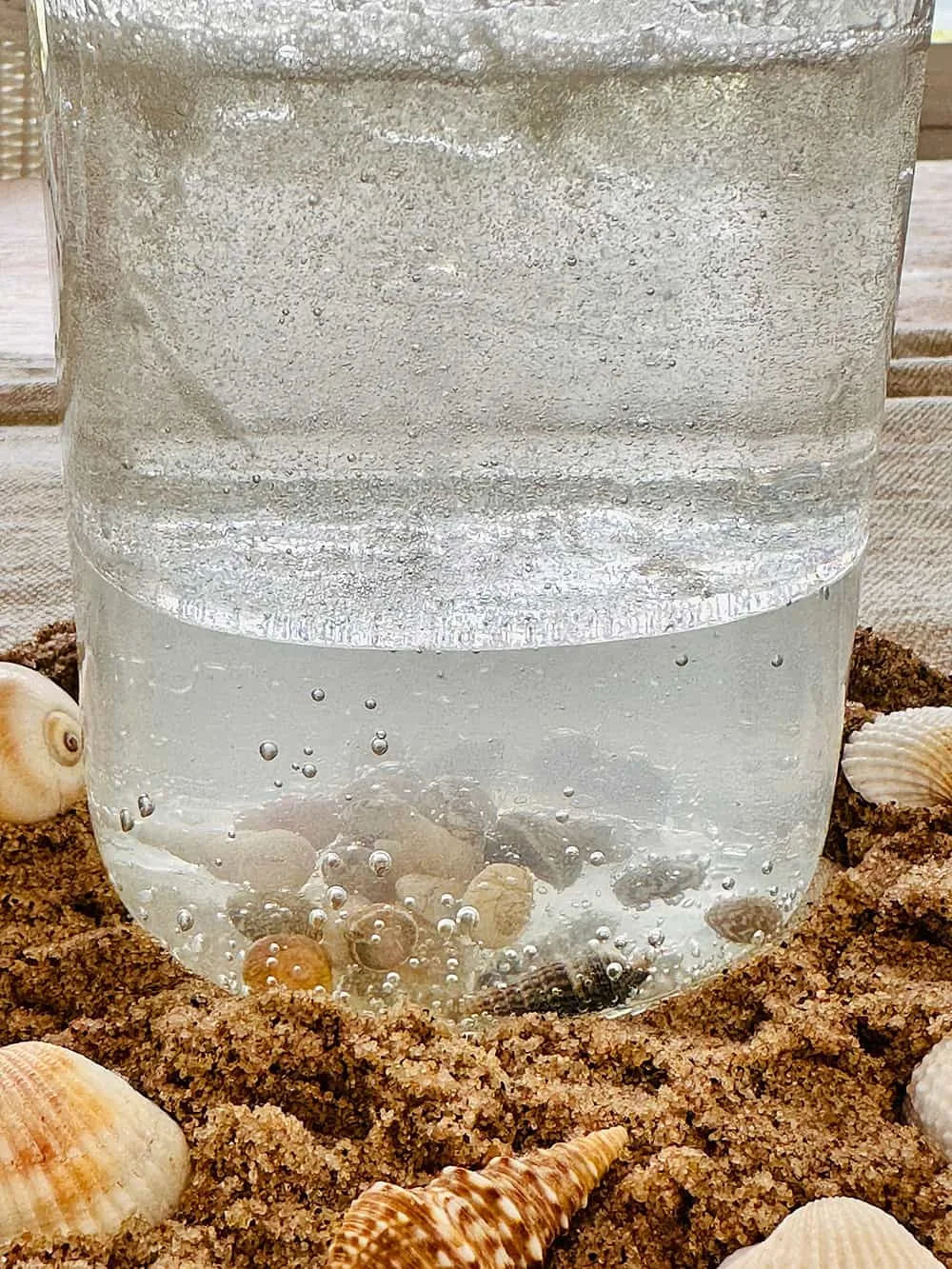
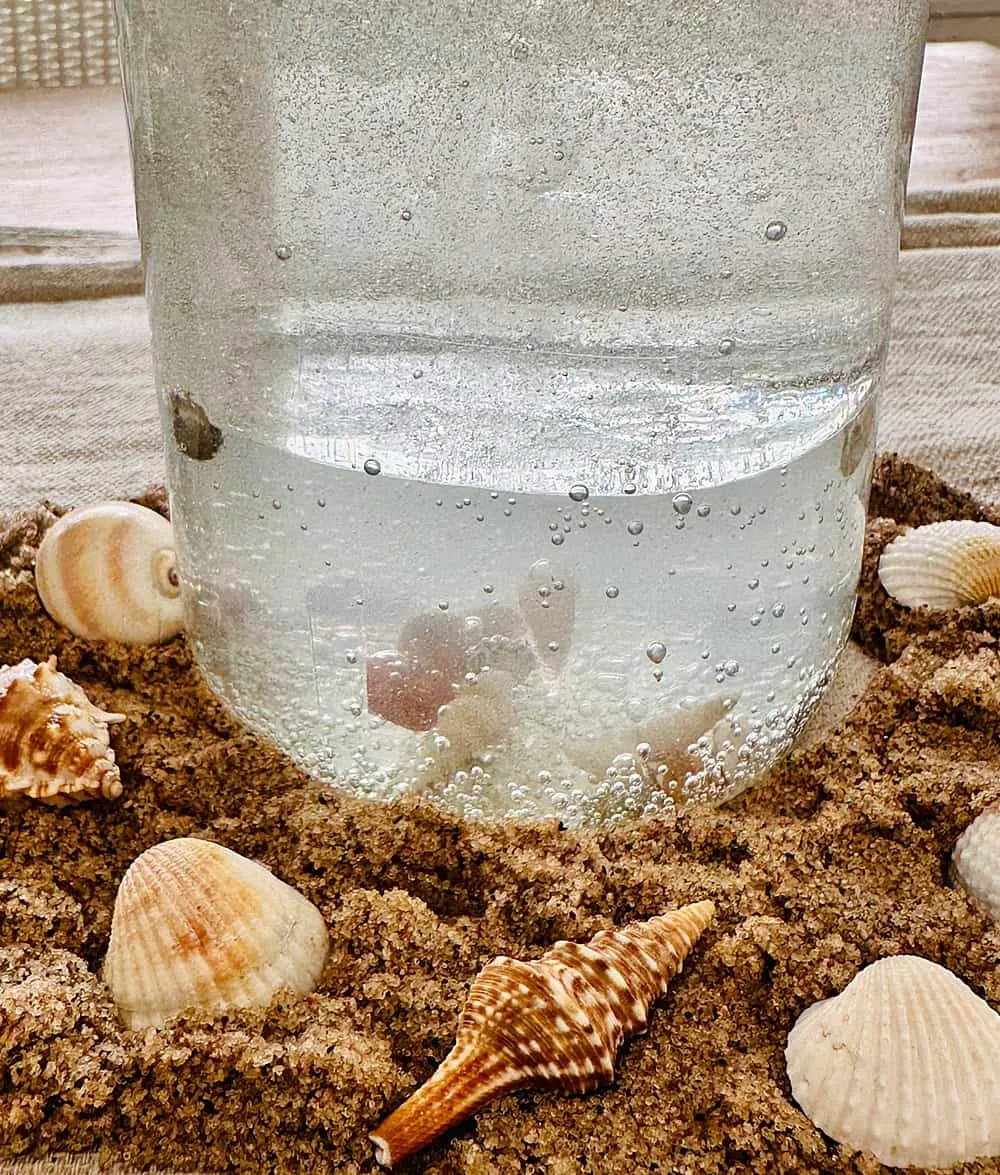
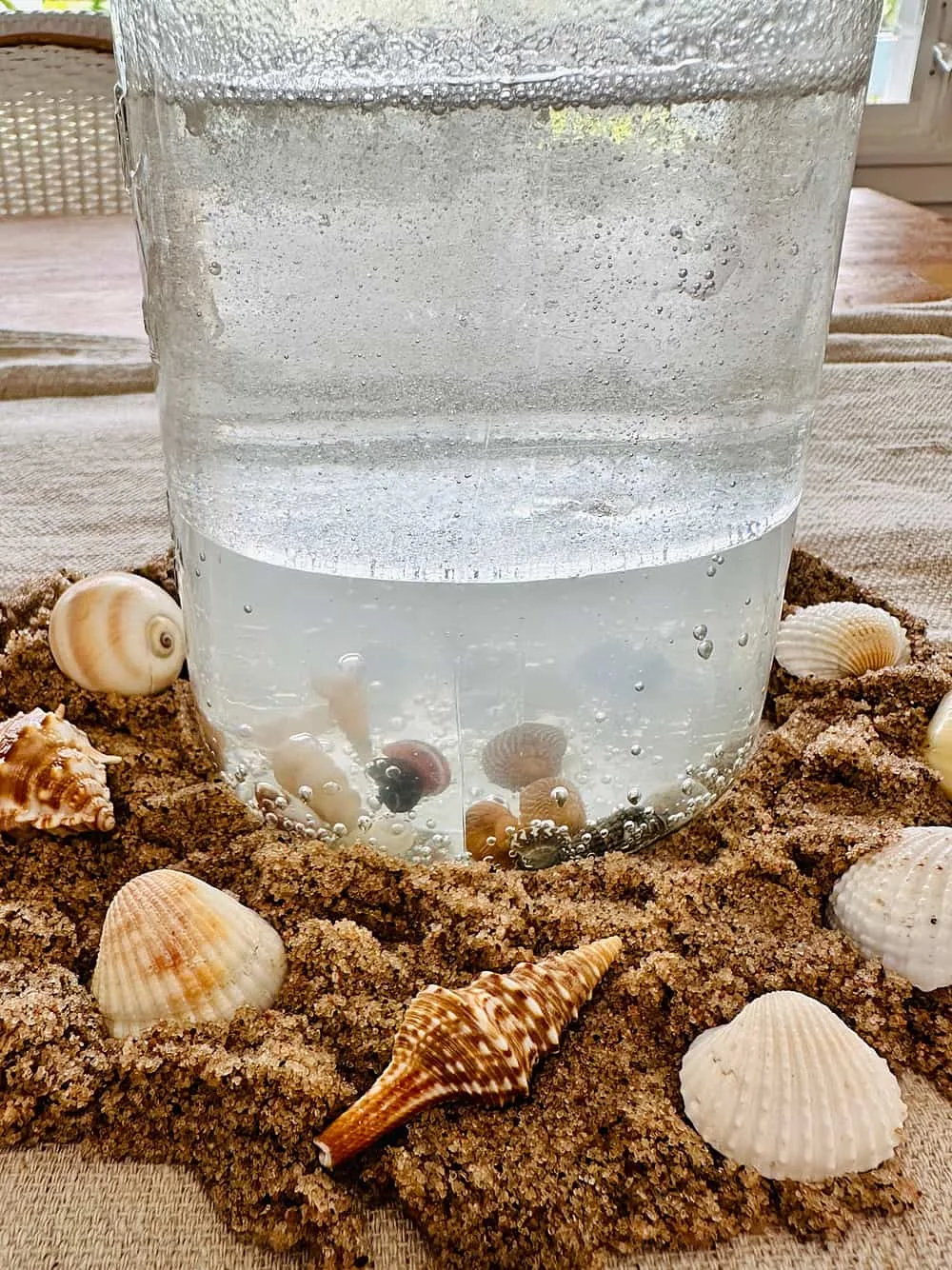
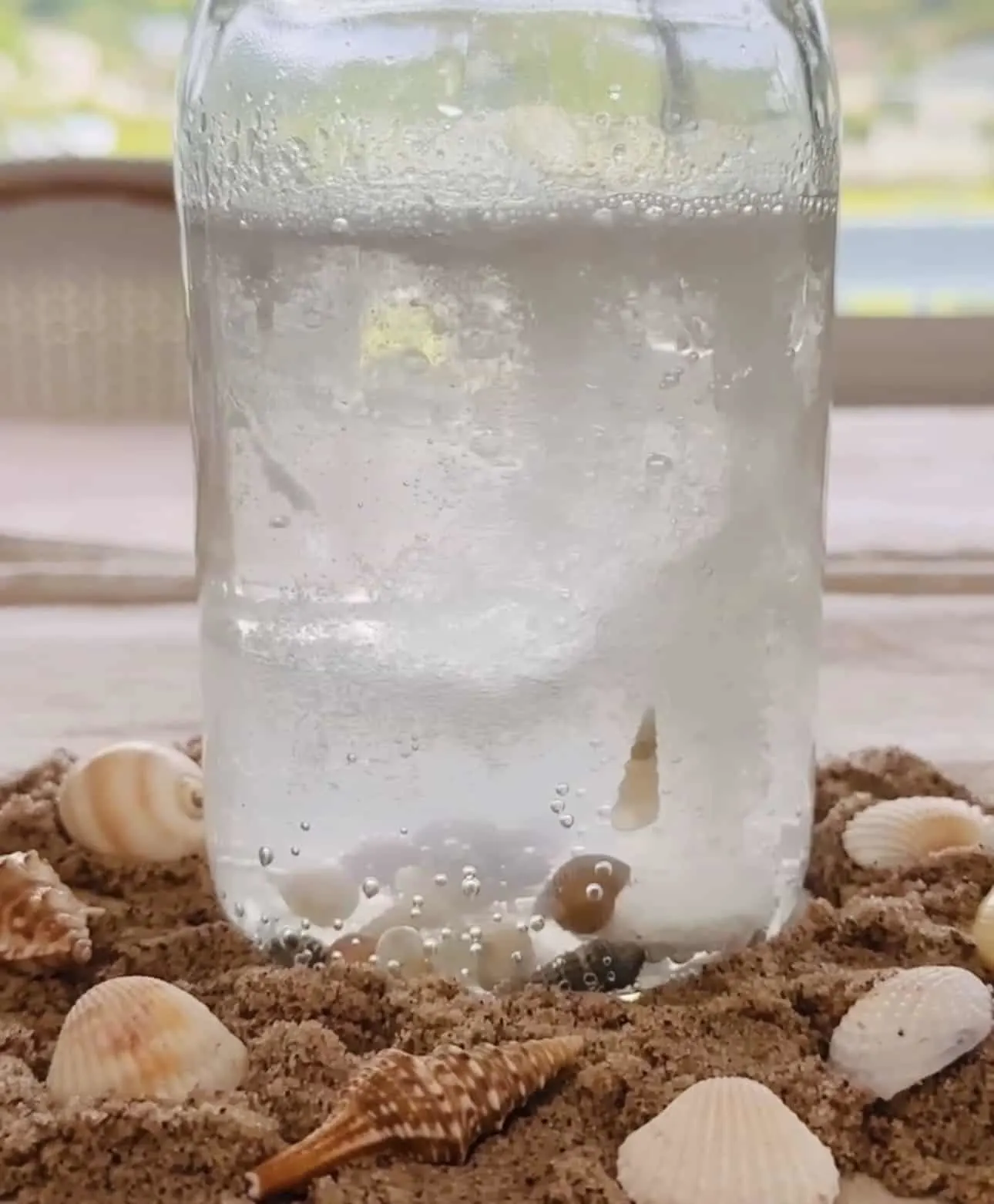
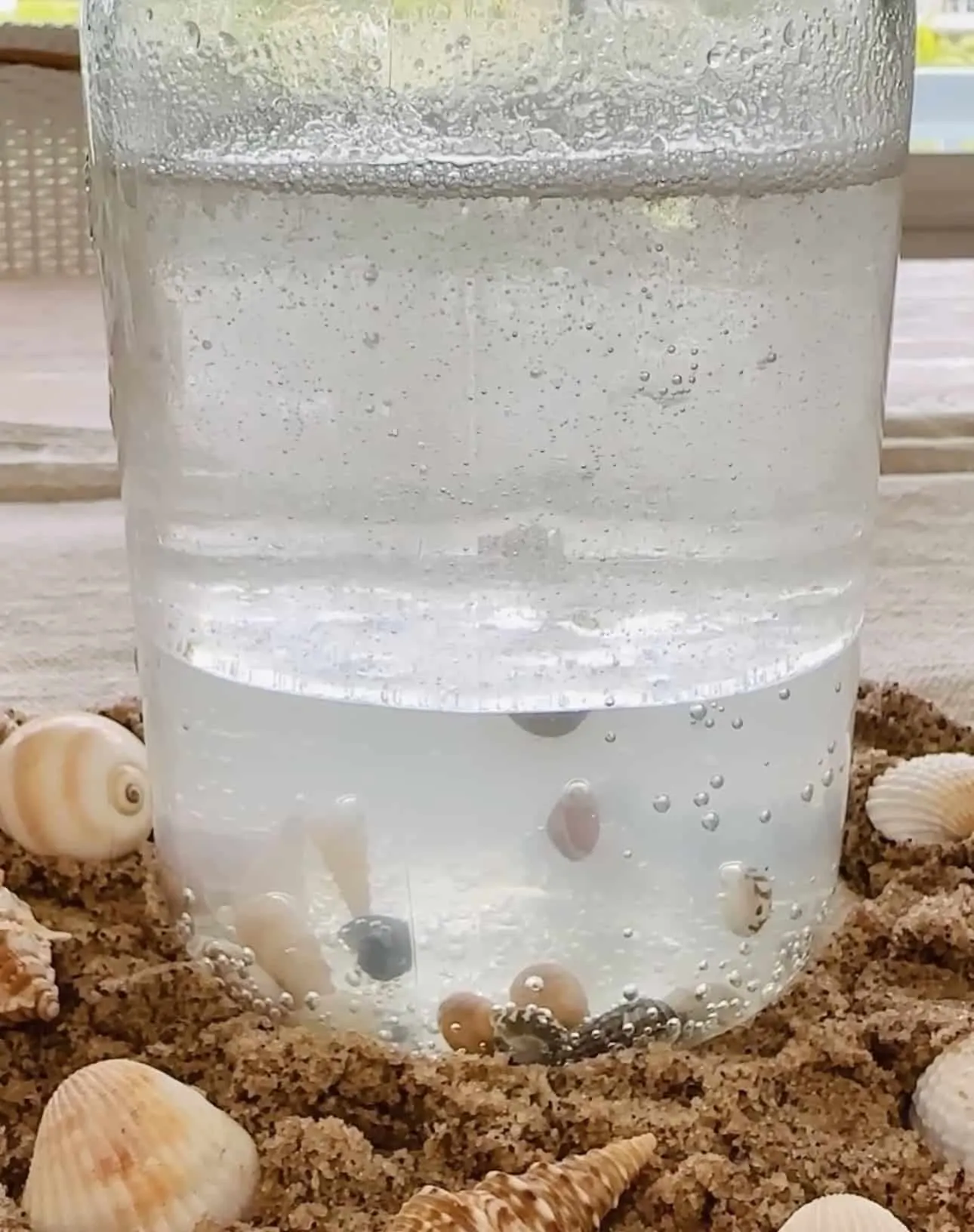
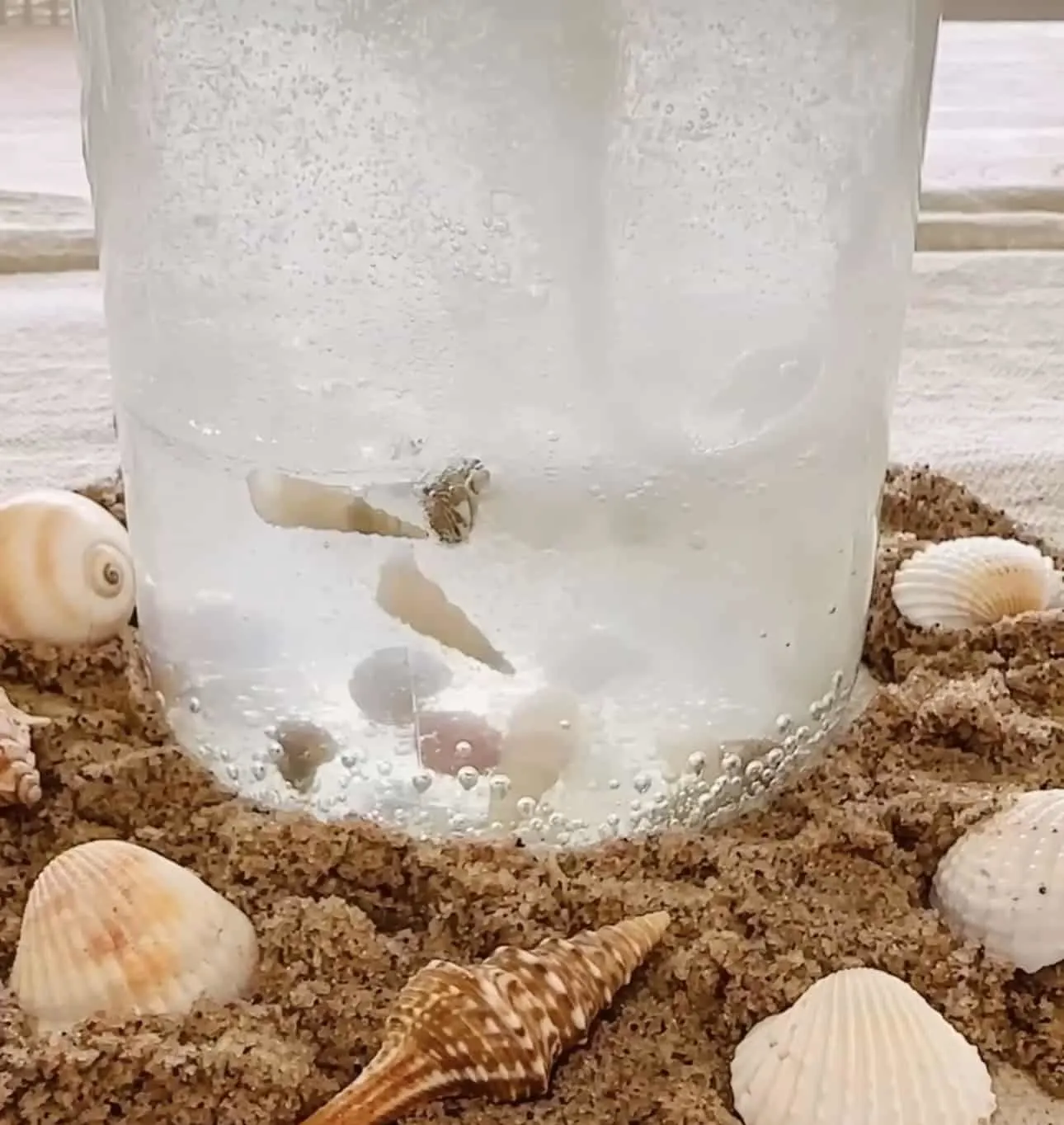
What do you need to create a dancing shell experiment?
All you need for this simple experiment is a jar, water, baby oil, and small seashells!
What’s the science behind water, oil and Alka-Seltzer experiment?
The Dancing Seashells experiment, which uses water, oil, and Alka-Seltzer, is a great way to illustrate a variety of scientific principles, including density, solubility, and gas formation. Here’s a closer look at the science behind each of these concepts:
1. Density: One of the first things you’ll notice when performing this experiment is that the oil floats on top of the water. This is due to a property known as density. Density is a measure of mass per unit of volume. Water is denser than oil, so the oil floats on top of the water, creating two separate layers.
2. Solubility: The Alka-Seltzer tablet doesn’t dissolve in the oil, but it does dissolve in the water. This illustrates the concept of solubility. Solubility is the property that substances have to dissolve in solvents. In this case, the Alka-Seltzer is soluble in water but not in oil.
3. Gas Formation: When the Alka-Seltzer dissolves in the water, a chemical reaction occurs that produces a gas – carbon dioxide. This is an example of a gas forming reaction, which is a type of chemical reaction where a gas is one of the products.
4. Buoyancy: When the gas bubbles form, they attach to the seashells and cause them to float to the top. This demonstrates the principle of buoyancy. When the shells have enough gas bubbles attached to them, they become less dense than the oil, and they float up. Once the bubbles burst at the surface and the gas escapes, the seashells become denser than the oil again and sink.
The Dancing Seashells experiment is a fun and interactive way to explore various scientific principles. Through this simple experiment, kids can learn about and observe density, solubility, gas formation, and buoyancy in action.
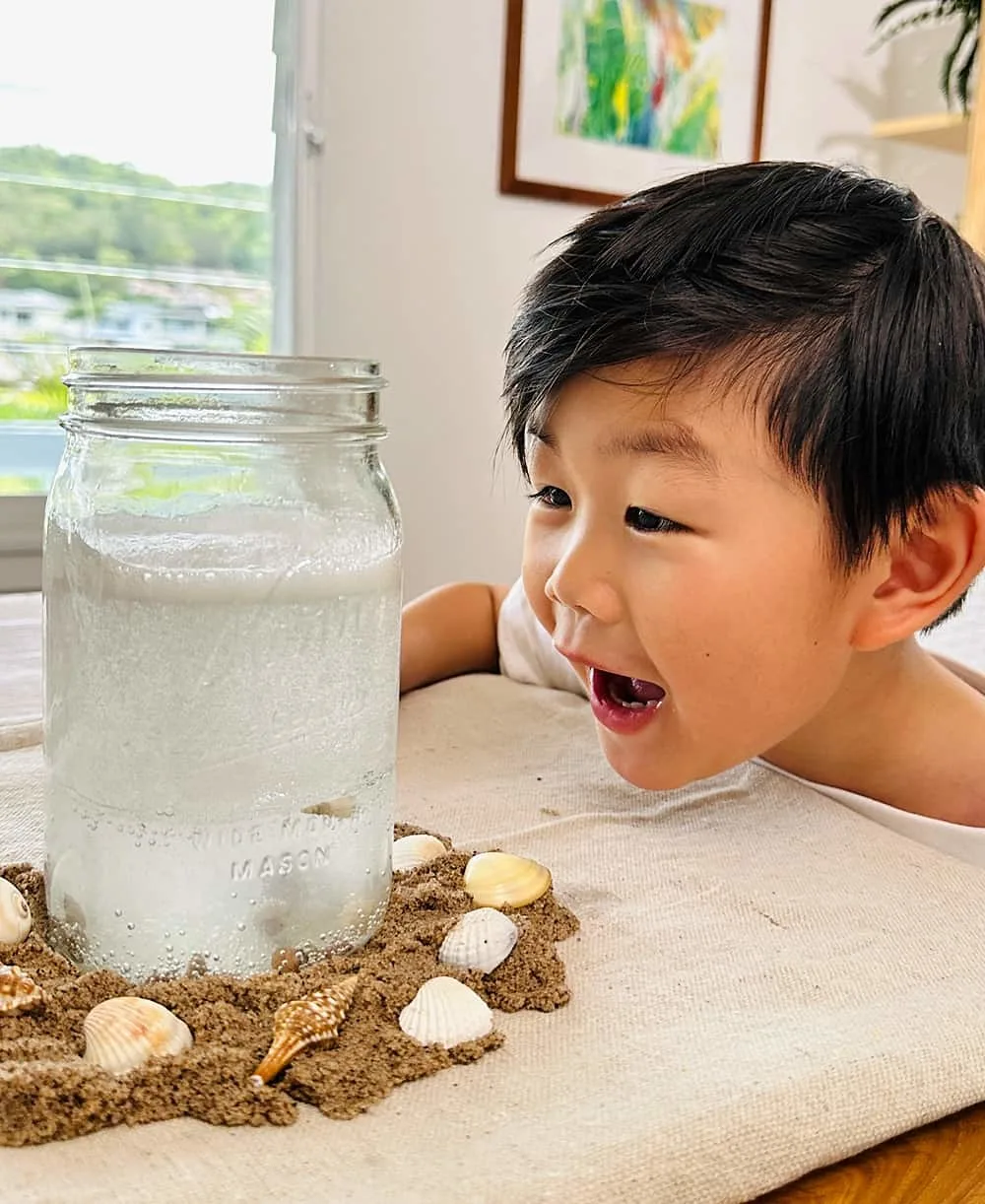
Does the Zize of Seashells Matter?
Yes it does, the larger your seashells the harder they will be able to “float” to the top. We experimented with different size shells and that tiny shells work best!
Do Seashells Dissolve In Vinegar?
Yes, seashells do dissolve in vinegar, which is why we chose to not use vinegar and baking soda in this experiment. Seashells are primarily composed of calcium carbonate, the same material found in chalk, limestone, and the shells of many marine organisms. When calcium carbonate comes into contact with an acid, like vinegar (which contains acetic acid), a chemical reaction occurs. This reaction results in the creation of water, carbon dioxide, and a type of salt called calcium acetate.
The dissolving process isn’t immediate—it takes time. The size of the shell, the concentration of the vinegar, and the duration of the shell’s exposure to the vinegar will all influence how quickly the shell dissolves. Likely you will have been fine in doing this experiment and disposing of the liquid right away. But we like to keep our shells in the solution and do this over and again to prevent waste so did not use vinegar.
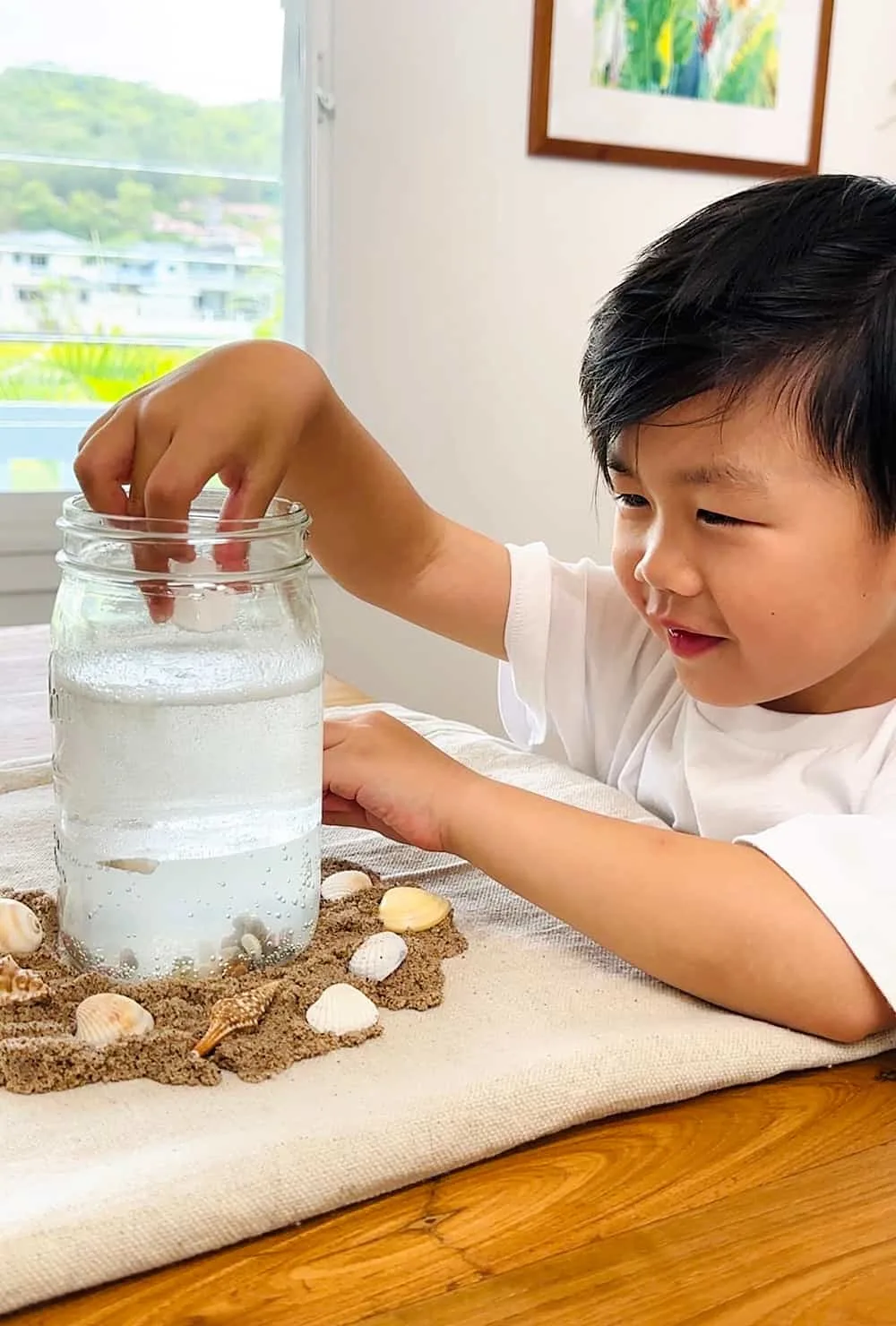
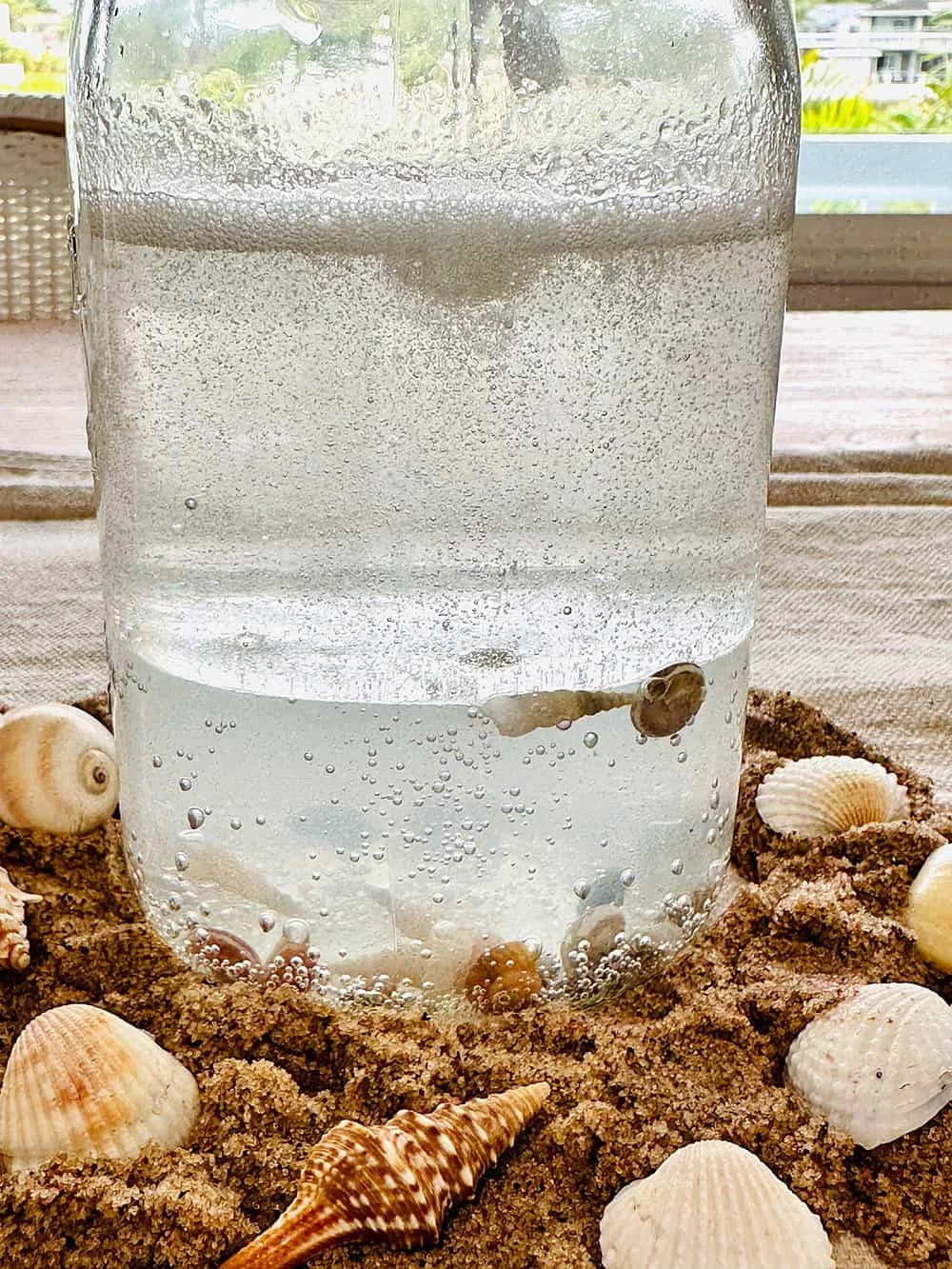
Seashell Experiment Materials
- A clear container or jar (preferably glass to avoid scratching or fogging)
- Water (pure water source or distilled is best for the least amount of cloudiness)
- Baby oil
- Tiny Seashells (any small seashells should work; note larger ones may not float)
- Alka-Seltzer tablets
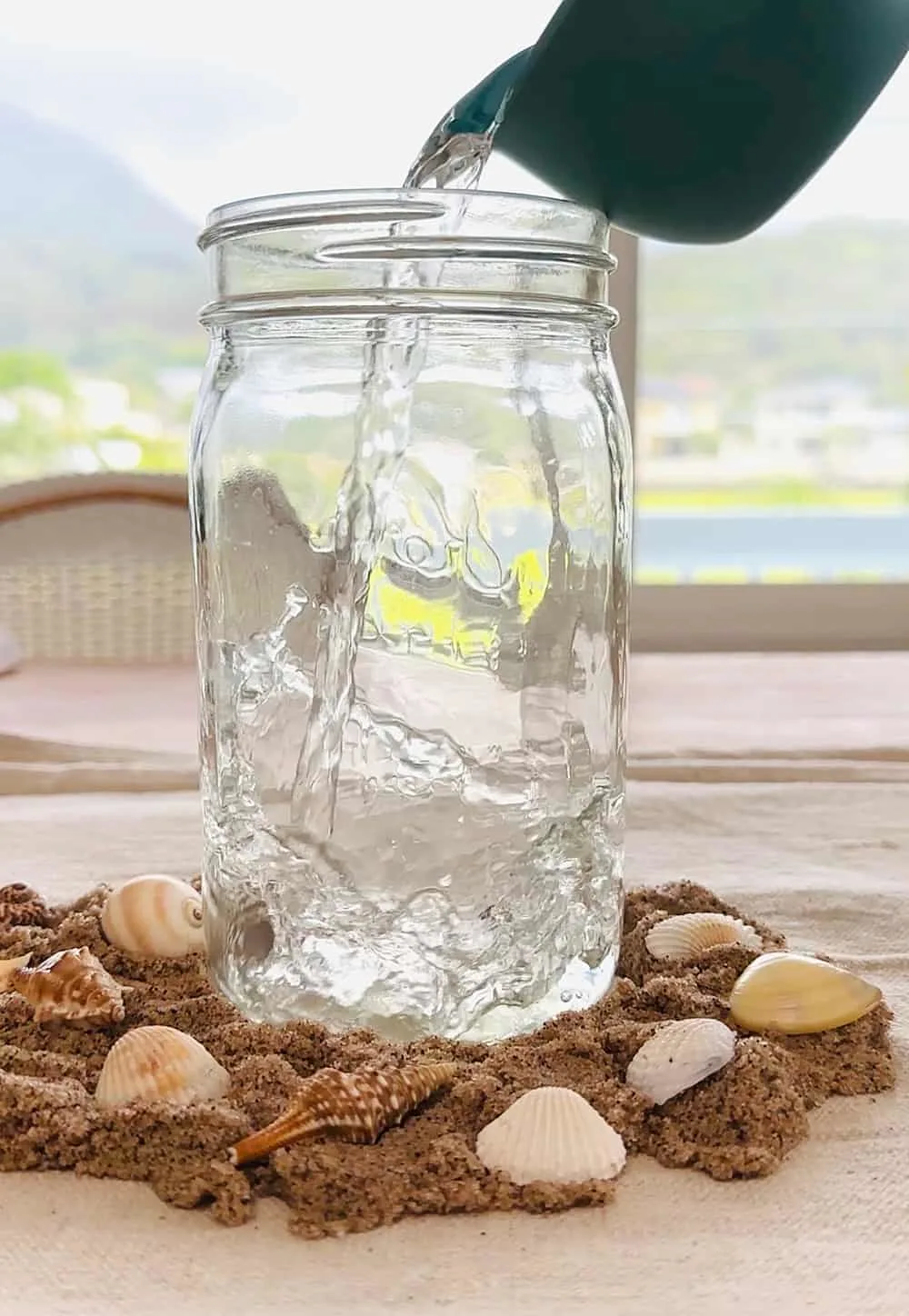
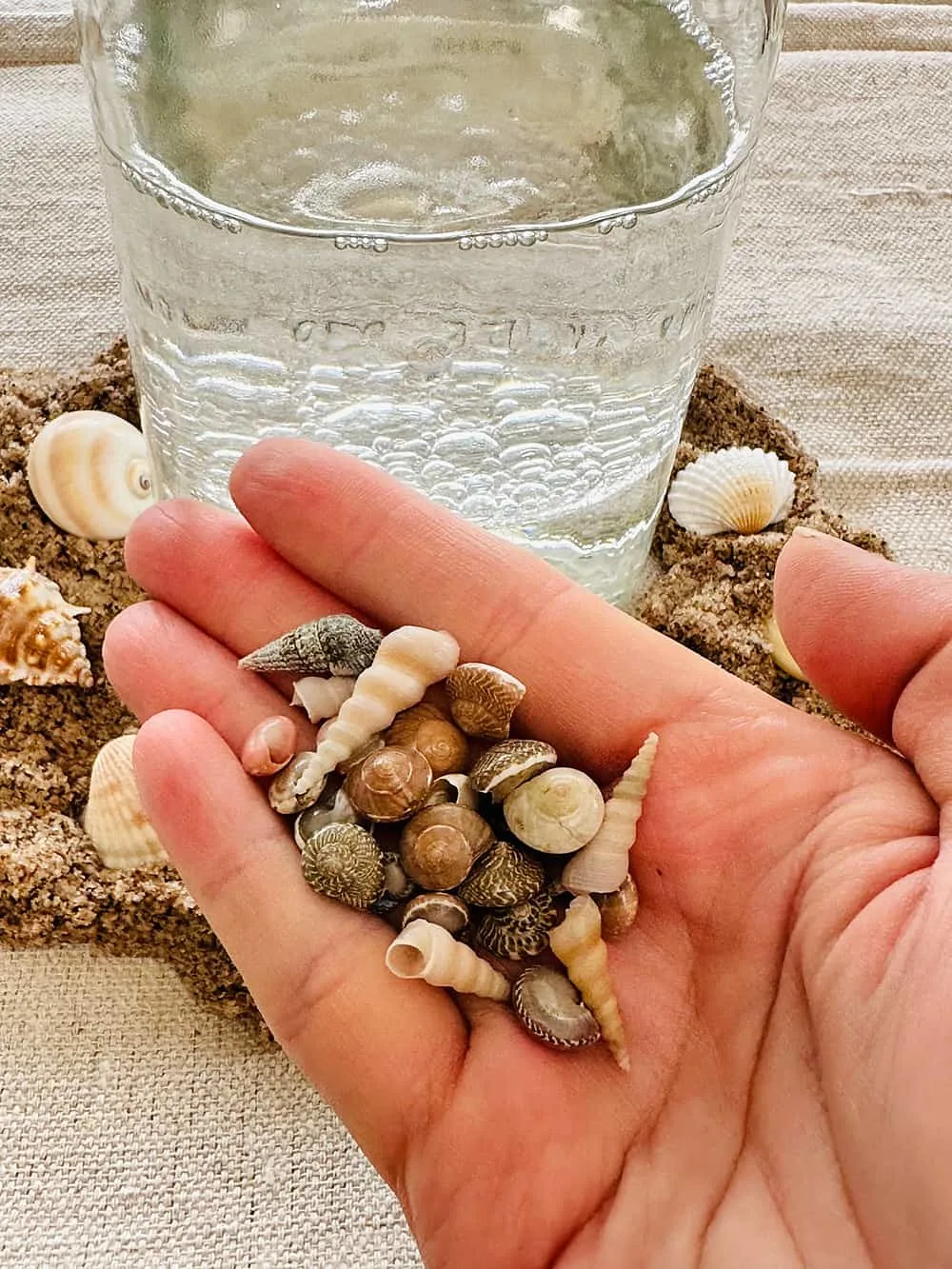
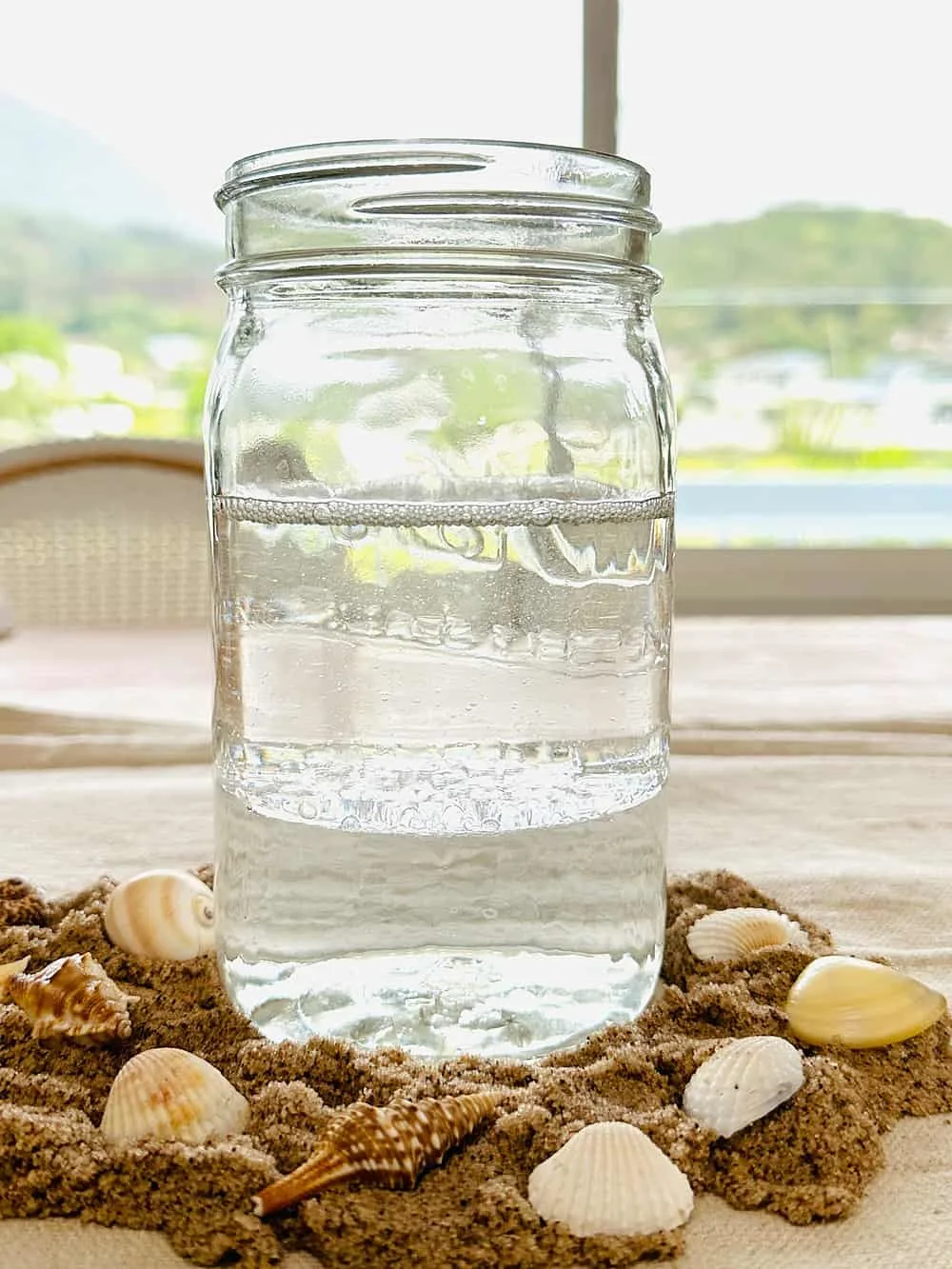
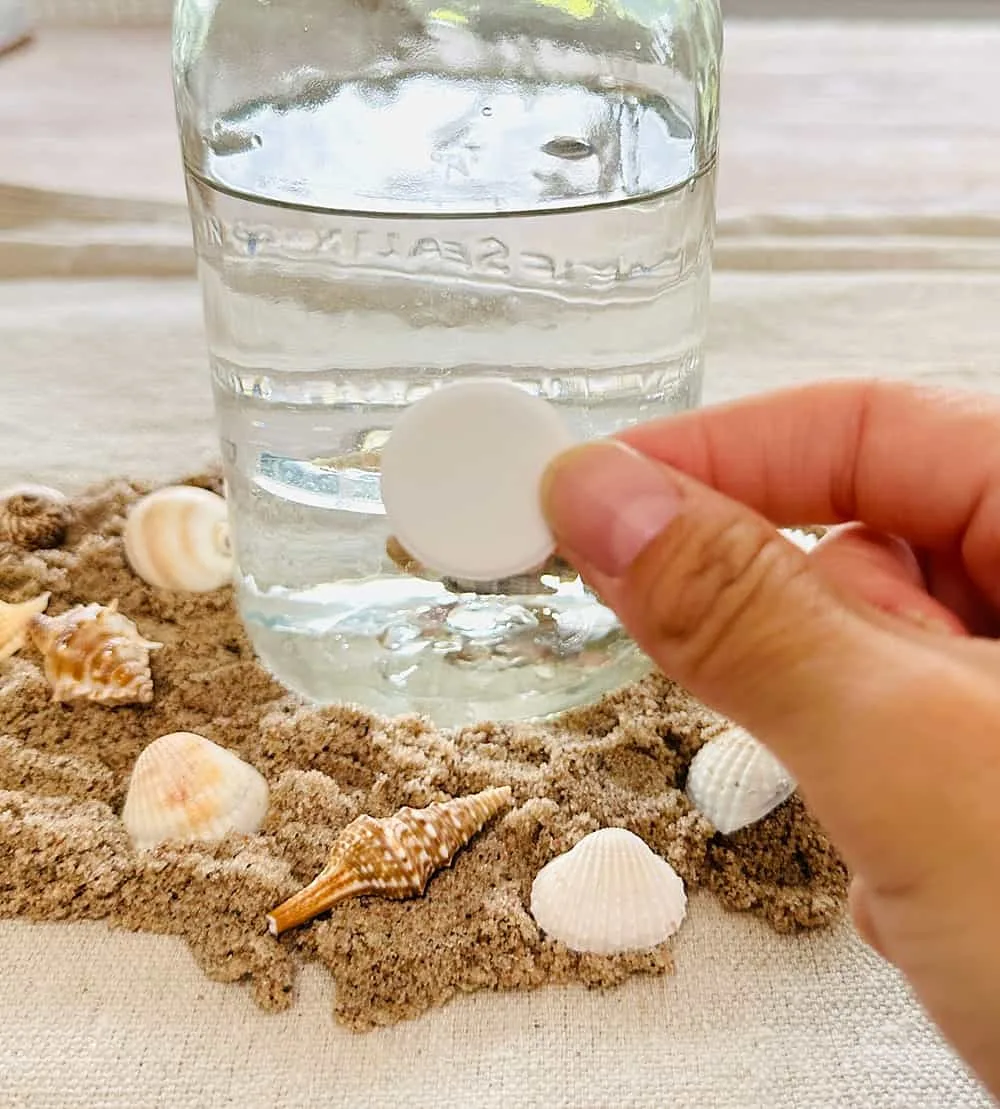
Instructions
Before you start, be sure to gather all your materials and have a discussion with your children about safety precautions while conducting experiments.
- Fill the Jar with Water: Fill up about one-third of your clear jar with water.
- Add Baby Oil: Pour baby oil into the jar until it’s about 2/3 full. We used approximately a 1:2 ratio of water to oil. So if you used 1/3 cup of water, you will need 2/3 cup of oil. You will observe that the oil floats on top of the water due to the difference in their densities. The two do not mix, forming two distinct layers, which is a fantastic way to explain the concept of immiscibility to the children.
- Introduce the Seashells: Drop your collection of seashells into the jar. You will notice that they sink to the bottom, as they are denser than both the oil and the water.
- Add the Magic Potion (Alka-Seltzer): Now comes the real fun part! Break your Alka-Seltzer tablets into a few pieces and drop them into the jar. Wait for a few moments and watch as the magic unfolds.
As the Alka-Seltzer dissolves in the water, it creates a gas (carbon dioxide). The gas bubbles rise through the oil, and along their journey, they attach to the seashells. This makes the seashells buoyant enough to float to the top of the oil layer. Once the bubbles pop and the gas is released, the shells lose their buoyancy and fall back to the bottom, creating a beautiful “dancing seashells” effect.
Final Thoughts
This Dancing Seashells experiment is a magical way to show kids a number of principles including density, buoyancy, and chemical reactions. By setting up these simple experiments, you can engage kids in hands-on activities to learn scientific principles. And the best part? They can be done right at home with everyday materials. Happy experimenting!
Magical Dancing Seashells Experiment for Kids
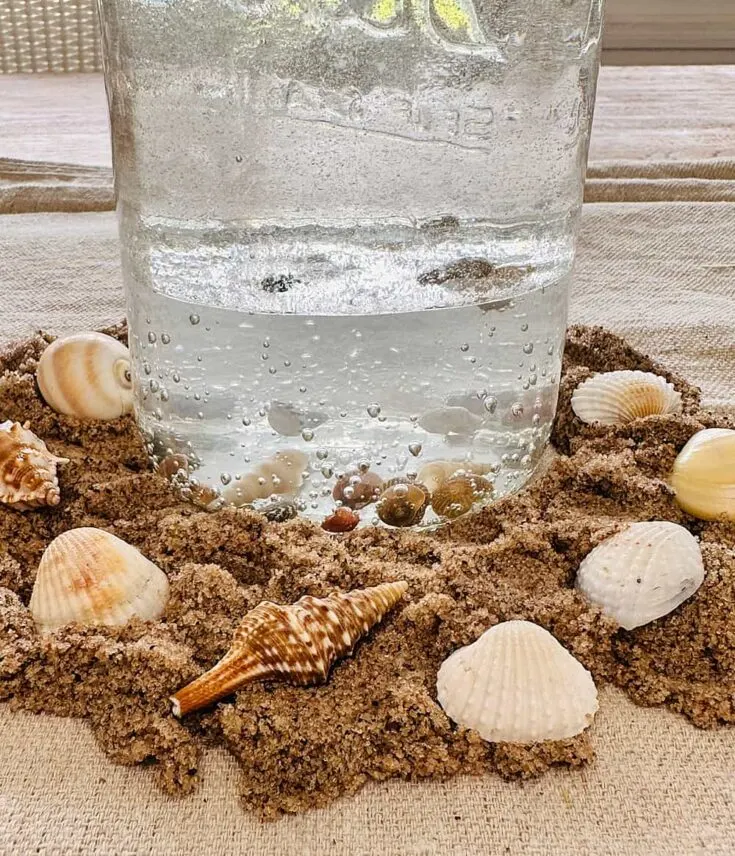
Materials
- A clear container or jar (preferably glass to avoid scratching or fogging)
- Water (pure water source or distilled is best for the least amount of cloudiness)
- Baby oil
- Tiny Seashells (any small seashells should work; note larger ones may not float)
- Alka-Seltzer tablets
Instructions
- Fill the Jar with Water: Fill up about one-third of your clear jar with water.
- Add Baby Oil: Pour baby oil into the jar until it's about 2/3 full. We used approximately a 1:2 ratio of water to oil. So if you used 1/3 cup of water, you will need 2/3 cup of oil. You will observe that the oil floats on top of the water due to the difference in their densities. The two do not mix, forming two distinct layers, which is a fantastic way to explain the concept of immiscibility to the children.
- Introduce the Seashells: Drop your collection of seashells into the jar. You will notice that they sink to the bottom, as they are denser than both the oil and the water.
- Add the Magic Potion (Alka-Seltzer): Now comes the real fun part! Break your Alka-Seltzer tablets into a few pieces and drop them into the jar. Wait for a few moments and watch as the magic unfolds.
Agnes Hsu is a mom of three and has been inspiring parents and kids to get creative with easy activities and family friendly recipes for over 10 years. She shares her love for creative play and kids food to her 2MM+ followers online. Agnes' commitment to playful learning and kindness has not only raised funds for charity but also earned features in prestigious nationwide publications.

